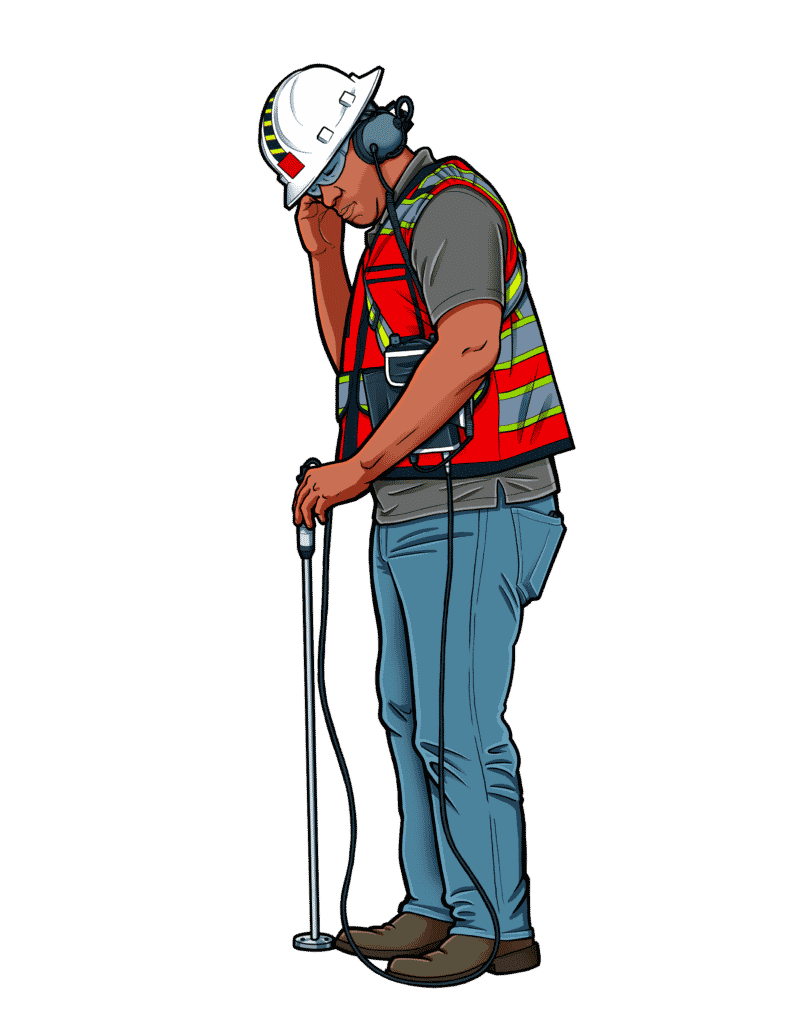When water leaks through a cracked or damaged pipe, it makes a specific noise that allows water loss specialists to determine not only if there is a leak, but where the leak location is. The best way to determine these detection factors is through use of an acoustic listening device, or an acoustic leak detector, which allows technicians to pick up on specific noises related to the leak. When water leaks underground, pressurized pipes often make many different sounds, the most important being a “hiss” or “whoosh” sound from the pip vibration and orifice pressure reduction. Trained water loss specialists will look for the distinctive “hiss” and “whoosh” sounds since they are the most common, and almost always present in pipes with 30 psi and above. Besides distinct sounds that reflect a pipe leak, there are other common signs of a bust pipe, including:
- Unusually wet areas inside and outside the facility like puddles (big or small)
- A sudden drop in water pressure
- A huge spike in water utility bills
- Watermarks (pockets of moisture) on your walls and/or floors
However, to listen to the noises that are present in burst pipes, water loss specialists and field technicians alike must utilize an acoustic listening device to narrow down the location of both high/low frequency noise which can be easily picked up through acoustic leak detection. Water leak sounds vary depending on the following factors:
- The severity of the leak or damage to the pipe
- Location of the pipe
- Water pressure
- Pipe installation or construction
- Depth of the pipe location
- Soil type
- Surface cover

How Are Acoustic Leak Detectors Operated?
Before getting into operation, we must first understand what acoustic leak detectors are made of. Typically, an acoustic listening device is made up of headphones, a microphone, an electric monitor, and an acoustic listening stick. The acoustic detectors work by connecting a stopper to the suspected damaged pipe. The stopper will then open and close the valve to create a rhythmic pulsation that can be picked up an acoustic listening stick. The microphone of the acoustic listening device is then placed directly above the buried pipes to listen for the “hiss” or “whoosh” sounds of the leak(s), and then “pinpoint” its location.
Often during a job, you’ll hear the technician use terminology such as trying to “pinpoint the water leak.” Water leak pinpointing is the term applied to the process of finding the exact location of a water pipe leak. Typically, wherever the sound (hiss or whoosh) is the loudest, that is where the leak is located. When the listener is very close to the leak, it may be impossible to decide based upon the user’s base hearing alone whether the leak is directly below or in a spot 3 to 4 feet away. When this situation occurs, the listener must study the visible display (water meter) to see if the signal is slightly stronger at one location compared to another.
But you must remember, leaks don’t always make a noise, or the level of noise is too low and can’t be detected with even the most sensitive and top of the line equipment. When water pools around a leak site, it proves this to be true and instead acts as insulation and muffles the leak noise. This is why it’s important that you select water loss specialists and field technicians, not only with the best leak detecting equipment, but with industry-leading, rigorous training and certification (such as our GPRS water loss specialists) that guarantees the technician can find the leak, even with no noise.
Advantages of Acoustic Leak Detection
The first and most important advantage of acoustic leak detection is it’s a non-invasive technique, which means it eliminates the need to dig out the ground or remove any structures just to check the physical characteristics of the pipeline system. Potholing and other invasive techniques not only require a tremendous effort but calls for repairs and replacements to be made afterwards. Trial and error method proves to be costly and time-consuming, where acoustic leak detection removes those unwanted hassles, and saves you time and money in the process. Other benefits of acoustic leak detectors include allowing homeowners and facility owners to have the problem fixed immediately, does not cause any damage to owner’s property, and acoustic listening devices are very accurate and precise.
Don’t forget, finding the exact location of your water pipe leak is the first in solving your leak issue. And using acoustic leak detection cuts the work time in half, proving to be the most efficient and cost-effective option when trying to pinpoint your leak. Call GPRS today for our exclusive leak detection service, so you can save water tomorrow!
